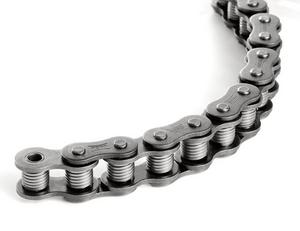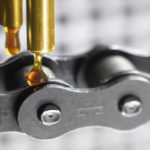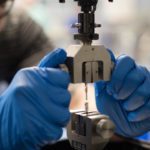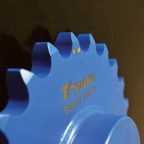Chain drives are a tried and true method of linear actuation and are used in much industrial machinery. A typical chain drive consists of two key components; a chain and a sprocket.
The chain itself is composed of several components including a pin, bushing, roller, pin link plate, and a roller link plate. The chain wraps around two sprockets; a driver sprocket and a driven sprocket. The driver sprocket is connected to the output of the motor or gear reducer and moves the chain,

while the driven sprocket connects to either the driven load or some other part of the system that is moved.
Perhaps the most significant benefit of roller chain drives is that they are a relatively straightforward and simple method of transmission of mechanical energy. They have been around for a long time and have a proven track record of functioning well in a range of applications and environmental conditions. This has made them mainstays of mechanical power transmission and for this reason chain drives still make sense in a host of applications.
Today’s roller chains feature high wear resistance, fatigue strength and tensile strength. Compared to other forms of drives such as belt drives, for instance, chain drives tend to have better efficiency due largely to less friction losses.
There are plenty of applications where chains are still used, a common one being in conveying applications. These systems can use chain drives for either horizontal, vertical or curved conveyor sections.
Operating environments can vary widely as well. There are uses in clean settings where the chain drives must operate lubrication free. Other applications expose chain drives to varying weather conditions, water, or harsh or corrosive chemicals. Examples include industries like wood or paper processing mills.
A common design requirement is for anti-corrosive chains. These can be either specially coated chains such as with special polymers, or materials such as stainless steel, titanium or nickel-plated chain. Other types include chains made from special lightweight plastic materials.







Leave a Reply
You must be logged in to post a comment.